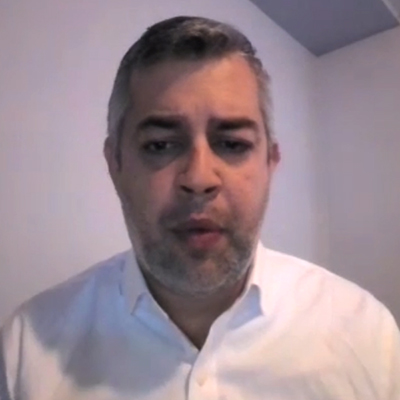A new proposed federal rule released Thursday aimed at cutting greenhouse gas emissions from the nation’s highways raised immediate questions about whether it would pass muster under the new judicial review standards for regulations set by the Supreme Court’s decision in West Virginia v. EPA.
The Federal Highway Administration (FHWA) issued a Notice of Proposed Rulemaking (NPRM) that would require state departments of transportation and municipal planning organizations (MPOs) to set goals for reducing greenhouse gas emissions from motor vehicles traveling on any parts of the National Highway System (NHS) within their states.
The NHS includes about 2,200 miles of interstate and other key highways across the country and is the most heavily used of the nation’s 4 million miles of public roads, according to Joung Lee, deputy director and chief policy officer of the American Association of State Highway and Transportation Officials (AASHTO).
Based on 2019 figures, the NPRM says, transportation accounts for 34.6% of total U.S. carbon dioxide emissions, with 83.2% of that total coming from on-road sources. The FHWA anticipates that transportation will continue to be the nation’s largest source of GHG emissions through 2050. The proposed rule would set a national framework for measuring carbon emissions from vehicle travel on the NHS, a performance standard that would be integrated into existing federal performance standards that states already report on to the FHWA, according to an agency press release. The NPRM lays out the FHWA’s argument for the new standard, noting that existing law authorizing it to set and collect data on highway performance standards includes “environmental sustainability” as a key goal.
“Measuring and reporting complete, consistent and timely information on GHG emissions from on-road mobile source emissions is necessary so that all levels of government and the public can monitor changes in GHG emissions over time and make more informed choices about the role of transportation investments and other strategies in achieving GHG reduction targets,” the NPRM says.
At the same time, states would have the flexibility to set their own declining emission goals, based on a reference year of 2021, the most recent for which complete data are available, according to the NPRM. But the targets would have to be in line with the U.S. commitments of reducing GHG emissions 50 to 52% by 2030 and to net zero by 2050.
The targets would have to be reviewed and possibly updated every two years for the state DOTs and every four years for the MPOs.
The notice has been submitted to the Federal Register, and a 90-day comment period will begin once it has been published, according to the FHWA.
“With today’s announcement, we are taking an important step forward in tackling transportation’s share of the climate challenge, and we don’t have a moment to waste,” Transportation Secretary Pete Buttigieg said. “Our approach gives states the flexibility they need to set their own emission-reduction targets, while providing them with resources from [the Infrastructure Investment and Jobs Act] to meet those targets and protect their communities.”
The FHWA pointed to the IIJA’s Carbon Reduction Program, which will provide $6.4 billion in formula funding to states and local governments “to develop carbon-reduction strategies and fund a wide range of projects designed to reduce carbon emissions from on-road highway sources.”
Lee praised the U.S. Department of Transportation and FHWA for being “forthright about this not being a one-size-fits-all approach.” But, he said, AASHTO and its members would be using that 90-day comment period to drill into the details of the proposed rule and talk with federal officials.
“I think state DOTs recognize that the transportation sector is the largest sector when it comes to GHG emissions in the United States, and we all want to be part of the solution when it comes to the climate change imperative,” he said during a Thursday media call. While noting the diverse nature of AASHTO’s membership, Lee said, “we are generally in alignment with the U.S. DOT that transportation-focused GHG-reduction efforts have to be done in a holistic way that involves all stakeholders in the community. …
“We hope what we come up with will be reflected in the final rule,” he said.
Defining ‘Performance’
The rule issued Thursday is essentially an update of a proposed rule the FHWA released in the closing days of the Obama administration in 2017, which was put on hold and then rolled back by the Trump administration in May 2018. At the time, the agency justified the rollback on the grounds that it had reconsidered the legal basis of the proposed rule and found that it was too expensive and replicative of other federal GHG-reduction efforts.
In West Virginia v. EPA, the Supreme Court ruled that federal agencies could not repurpose yearsold legislation to justify new rules for issues not covered in the original law. Lee was careful in answering questions as to whether the new rule is specifically authorized under current law.
“We have to look to see if their statutory rationale is consistent with the Federal-aid Highway Program,” he said. “That’s part of what we’re trying to figure out.”
Lee cited two laws that could be critical in that determination: the Moving Ahead for Progress in the 21st Century Act (MAP-21) passed in 2012, and last year’s IIJA. According to the NPRM, MAP-21 allowed the FHWA to develop “national performance management measure rulemakings,” which resulted in standards on highway safety performance, infrastructure performance and system performance to assess freight movement, traffic congestion and on-road mobile source emissions affecting air quality.
While acknowledging that Congress did not specifically define “performance” to include environmental sustainability, the agency argues in the NPRDM “that Congress has directed FHWA to determine the nature and scope of the specific performance measures. … Accordingly, FHWA is proposing that the performance of … the NHS includes environmental performance.”
In support of this interpretation, the agency also cites the IIJA, which includes highway resilience and protection as one of the performance goals for federally funded highway aid programs.
Kate Zyla, executive director of the Georgetown University Climate Center, believes that “the FHWA’s proposed GHG performance measure is part of its well established Transportation Performance Management program. … FHWA has issued performance measures for safety, congestion, bridge and pavement conditions, for example. The newly proposed GHG performance measure would be similar.”
But at an online panel sponsored by the Climate Center on Tuesday, environmental law experts cautioned that following West Virginia v. EPA, such arguments will have to be strategically made. “Policies that look like the agency is doing one thing, but it’s doing it for the reason of reducing greenhouse gas emissions” could be a red flag for the conservative justices now dominating the Supreme Court, said Jonathan H. Adler, a law professor at Case Western Reserve University in Cleveland.
Federal agency officials may need to scrub “every document, every speech, every talking point to make sure that any climate benefits are ancillary, secondary,” Adler said.
Deron Lovaas, senior advocate at Natural Resources Defense Council, said the rule a “would help states and localities move toward a transportation system that’s equitable and clean. By measuring emissions and developing plans to cut them, states and localities can determine how to build a resilient and efficient transportation system that will serve us all for decades to come.”
But Sen. Shelley Moore Capita (R-W.Va.) called the new rule “unauthorized.”
The IIJA “included provisions to address climate change and the resiliency of transportation infrastructure in a bipartisan way,” Capito said. “This greenhouse gas performance measure announced today was not part of that legislation. Unfortunately, this action follows a common theme by both DOT and the administration, which is implementing partisan policy priorities they wish had been included in the bipartisan bill that the president signed into law.”


